A Cambodian Selfie
Visiting Cambodia in 2015 and 2018 resulted in studio based work which considers the experience and impact of travel today. What does it mean to travel? What is the worth of the images we take? Do we really see or are they only blind selfies? The word tourist was coined by the 17th century Grand Tour, and today tourism is the world’s largest industry.
Grand Tour Self, A Cambodian Selfie acrylic on masonite 173.5 x 120 cm
Semi-finalist Doug Moran National Portrait Prize NSW 2018
The Grand Tour, at its height in 1660–1820, was undertaken to complete the education of predominately wealthy young men, the elite’s entry into polite society. Accompanied by a tutor or guide the most popular destinations were major centers of culture, and sites of ancient Roman and Greek civilization.
Today’s tourist holds much in common with those earlier travelers; while the journey is not as arduous, the mindset is similar. Our idea of a ‘holiday’ reflects the reality that time on the Grand Tour was frequently spent in more frivolous pursuits.
Most striking is the difference in speed. A Grand Tour lasted from months to years, today it is possible to dip in and out of cultures and worlds different from our own for a few weeks/days or even hours. There is no slow acclimatization and the real sense of distance traveled has been lost.
Souvenir collection was just as endemic. The desire to record one’s own image as traveler was met by commissioned portraits, painted either in iconic settings or surrounded by tokens of learning and acquired mementos. Now a selfie takes only seconds to capture.
My self portrait, ’Grand Tour Self’ references the traditions of the Grand Tour portraits. The proportions, composition and pose is based on the 17th century Italian painter Pompeo Batoni’s portrait of 22 year old Wyndham Knatchbull-Wyndham. Grand Tour sitters were typically portrayed wearing the luxurious silk ensembles they had tailored overseas, in the company of their dogs. I am wearing Cambodian trousers and shawl, and not having any dogs, substituted my cat and chickens. As the Grand Tour artist’s worked in their studios, not out on site, certain props reappear. The chair in the Wyndham portrait is in a number of Batoni portraits and I have incorporated it into my own.
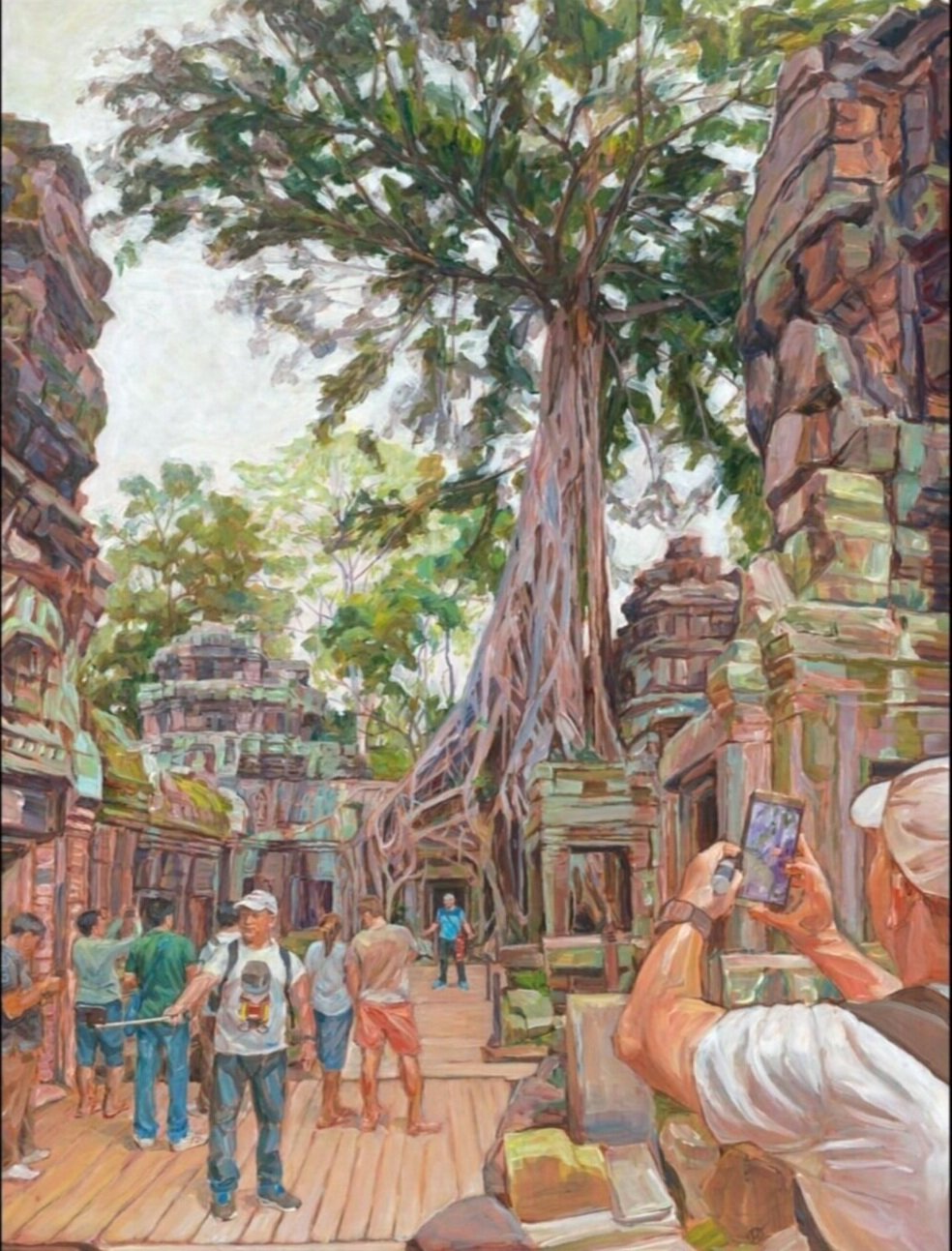
Cambodian Selfie I acrylic on masonite 98 x 74 cm

Worlds Apart acrylic on masonite 70.5 x 120 cm

Cambodia II acrylic on masonite 98 x 65 cm

Cambodia VI acrylic on masonite 98 x 62 cm

Cambodia I acrylic on masonite 98 x 68 cm

Cambodia III acrylic on masonite 98 x 64.5 cm

Cambodia V acrylic on masonite 98 x 70 cm
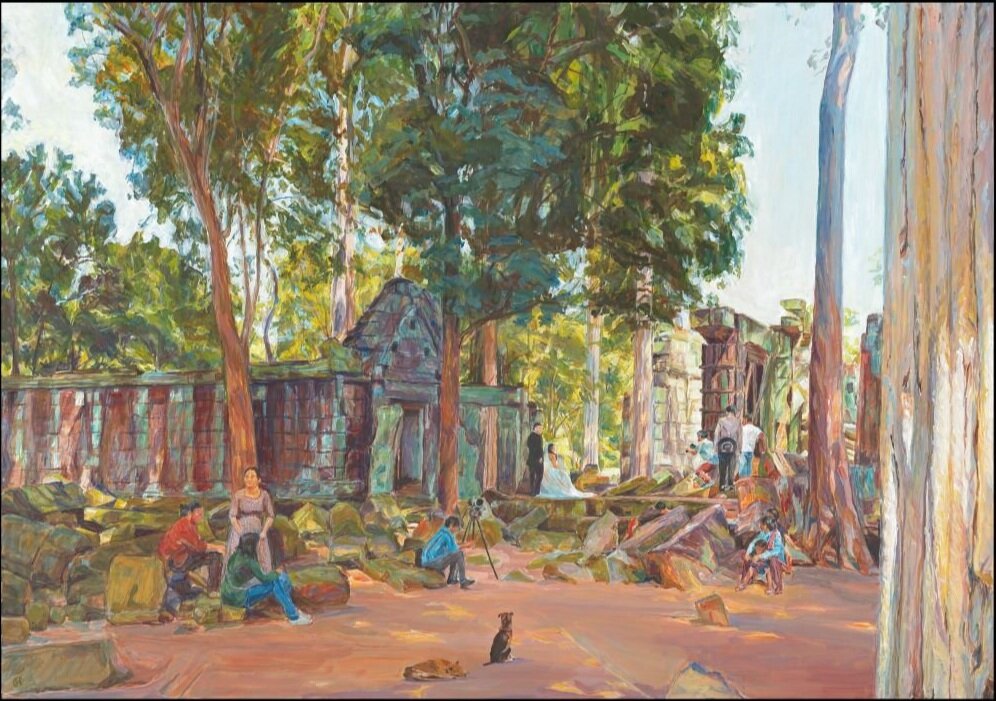
Marriage of East and West acrylic on masonite 77 x 109cm

Dreams of Devatas and Asparas 71 x 96.5 cm

Cambodia IV acrylic on masonite 41x 162cm

Passed By acrylic on masonite 30 x 170 cm

At the edge of Understanding acrylic on masonite 41 x 202 cm

Possibility of Visit acrylic on masonite 58.5 x 162 cm
‘A Cambodian Selfie’ was exhibited at Salamanca Art Centre, Tasmania in 2018
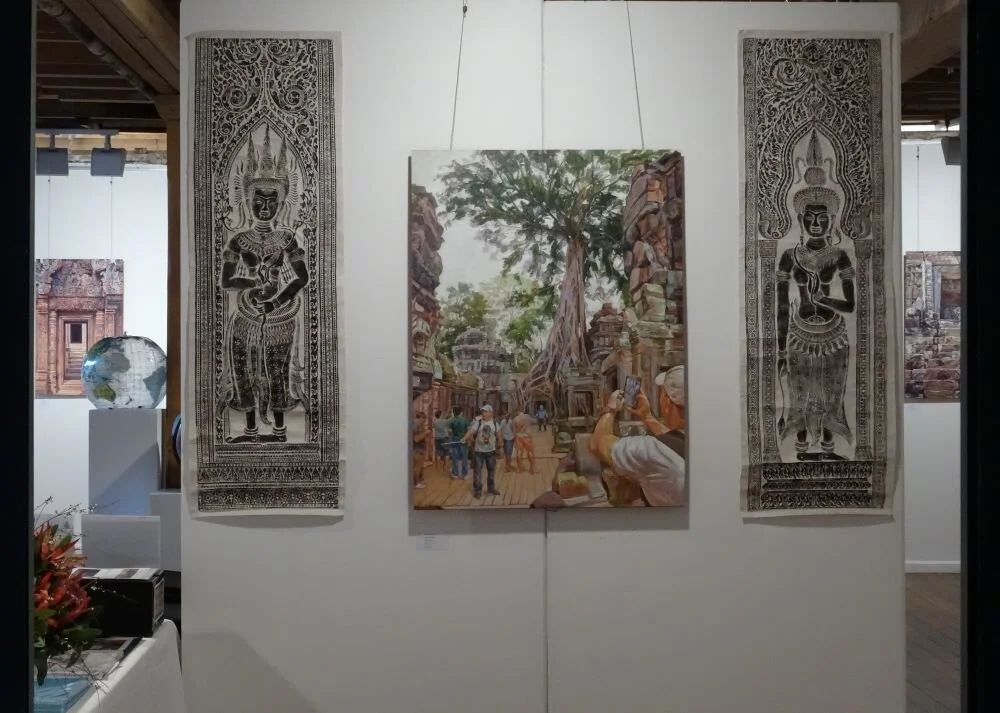
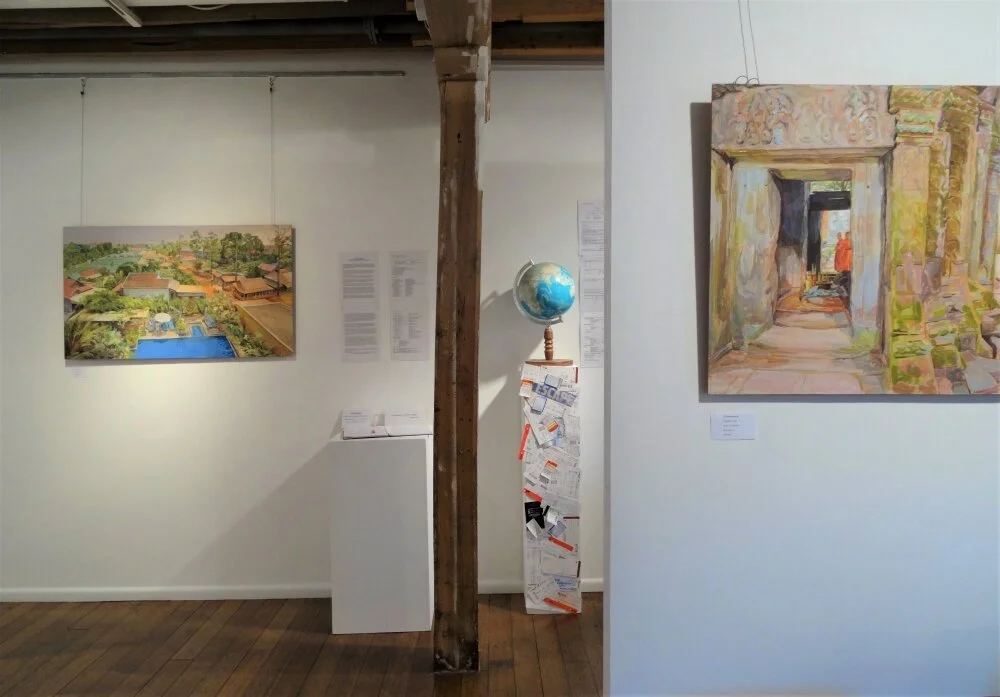
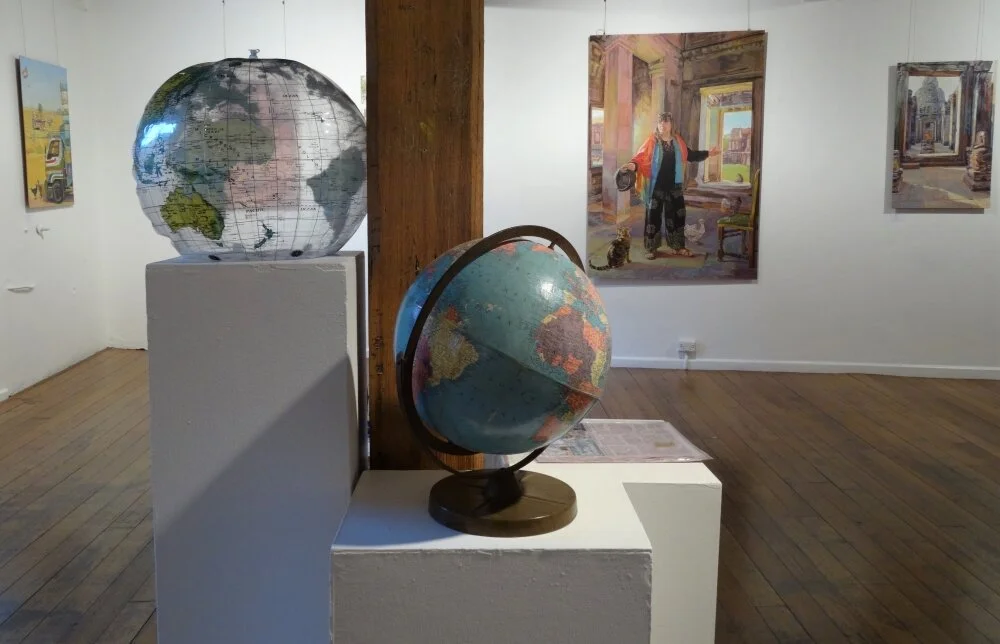

ARTIST STATEMENT
‘A Cambodian Selfie’ contrasts the superficiality of mass tourism with the real world of Cambodia, a country struggling with extremes of wealth and poverty, corruption and privilege and the intergenerational trauma of civil war. In their tourist bubble focused on the stunning historical sites such as Angkor Watt what is learnt or understood about the current lives of its people?
In 2017 the Australian Department of Foreign Affairs contributed 90 million of tax payer’s money to aid Cambodia’s ‘greater prosperity’. This to a country whose track record on human rights and democracy is lamentable. A government who’s Tourism Minister has stated ‘we have no crisis but there are politicians who are having a crisis themselves’ in reference to opposition party members fleeing the country after the governments forced disbandment of their party in preparation for the 2018 elections. The ‘democratic elections’ held this July were a fraud and a sham.The Cambodian people are once again facing a regime that is a dictatorship run by force and fear.
While the tourism town of Seim Reap expands its accommodation and services government imposed economic land concessions rob farmers of their land and livelihoods. Half of the countries arable land, a quarter of the countries surface, has been conceded to private companies under the scheme. It has been estimated that 85% of Cambodians are now migrants, either internal, or external.
Holiday travel is by its nature superficial and can only provide a small window to experience another culture but how much smaller is that window getting every day as the crowds hop off planes onto buses, following their tour leaders flag back to the safety and sterility of their generic hotel? The Grand Tour has become ‘grand tourism’, the crowds of people descending on ‘hot spots’ are now so vast that whole cities are considering limiting their numbers because of the impact physically and culturally of this stampede. What do these tourists really see and return home with? A bucket list ticked? A series of selfies loaded onto facebook and instagram?
Travelling for the sake of curiosity and learning was an idea developed in the 17th century. WithJohn Locke'sEssay Concerning Human Understanding(1690), it was argued, and widely accepted, that knowledge comes entirely from the external senses, that what one knows comes from the physical stimuli to which one has been exposed. Travel, therefore, was necessary to develop the mind and expand ones knowledge of the world.Today tourism is the world's largest industry. More people are involved, either as a member of a host community, a travel/tourism industry player or as a consumer/tourist than in any other industry. The legacy of the Grand Tour lives on still influencing the destinations tourists choose and shaping the ideas of culture and sophistication that surround the act of travel, but of the staggering 2.5 million visitors to Angkor Watt in 2017, generating 52.5 million in six months, what is the real cost and benefit to the Cambodian people?’Henrietta Manning, August, 2018.

